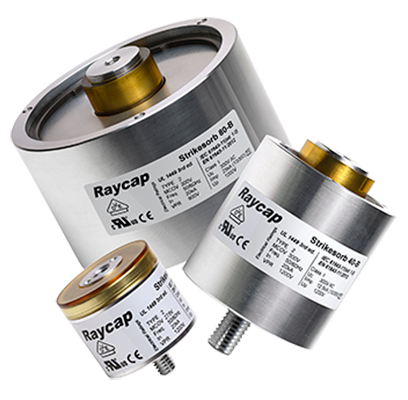While the industrial and residential markets both benefit from surge protection devices that provide a layer of protection to shield sensitive computer and data processing equipment from electrical transients, the two markets are quite different in the devices that perform the tasks. The typical residential surge protection device will generally come in the form of a surge strip, or maybe a slightly larger switchoff device that also integrates a battery backup. These types of devices are usually called upon to protect computer equipment in homes from electrical transients that are not large enough to actually trip circuit breakers, but still large enough to do damage to circuitry. There is a threshold that all computerized equipment can handle before sustaining damage to the processors and internal components, and even the slight breaches of this threshold that are seen when minor power surges happen still cause damage. This damage might not be as gratuitous as a complete failure of the component, but ongoing degradation over time also shortens the useful life span of any equipment that goes unprotected. The job of a surge protection device is to prevent the level of electrical flow from going over a specified amount under any circumstances, and that can be accomplished through various means. Circuit breakers will cut off the flow of electricity through a panel, and surge suppressors cut off the flow from the point of the actual connection of equipment to the wall outlets.
Industrial surge protective devices like cell site surge protection are more technologically advanced, as they are called upon to protect equipment that is far more expensive and is generally housed in exposed areas that are prone to switching transients and surges from the grid. While the basic functionality of industrial surge protection devices is the same, the technology utilized in both the construction of the devices as well as the ongoing daily functionality of the units is far more advanced. Due to the sheer level of electrical flow being far higher within an industrial application, the devices themselves must be manufactured from materials that are able to withstand those increased demands. Reinforced housings are also called upon to protect the devices themselves from damage as a result of the exposure to the elements. The installation methods, patterns and redundancy are all considered at a far higher level than residential devices due to the increased demands of the areas that rquire them. Most importantly, however, is the protection of system components while still enabling functionality to be restored or even continuing after an instance of surge. While a home computer can be shut down as a result of a surge without issue, an entire communications grid or production facility cannot remain offline for extended periods of time while maintenance is performed to the components or even the devices themselves. The technologically advanced SPDs manufactured by Raycap provide this heightened level of protection while requiring no on-going maintenance of their own or module replacement, keeping systems functioning for longer periods. Uptimes are necessary to be protected in order to increase business, and for this reason the use of Raycap products within your industrial facility just makes sense.

